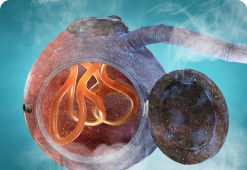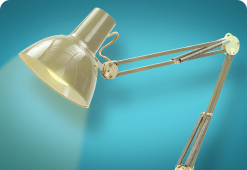Blood tests
Doctors can see signs of glomerular disease in your urine and your blood,1 for example:
- High levels of protein (proteinuria) or traces of blood (haematuria) in your urine1
If a patient’s urinary protein levels are extremely high, doctors sometimes call this “nephrotic range proteinuria”.1
- High levels of creatinine or urea nitrogen in your blood1
Creatinine is a waste product that’s naturally produced by our muscles,2 and urea nitrogen is a waste product that is naturally produced after the liver breaks down proteins.2 When the kidneys aren’t working well, the levels of creatinine and urea nitrogen in the blood go up, indicating that the kidneys aren’t removing them as efficiently as they should.2 Doctors use them to estimate how well the kidneys are working.2
Renal imaging and biopsy
Your doctor may recommend renal imaging as a next step.1 This is a non-invasive procedure that uses ultrasound or x-rays to look at the kidneys and check that they are a normal shape and size.1
If abnormalities are found, the final step for formally diagnosing glomerular disease is often to carry out a kidney biopsy.1 A needle is used to take small pieces of tissue from the kidney so doctors can check them under a microscope.1 The biopsy can show what type of glomerular disease the patient has. For most glomerular diseases, a biopsy is needed to confirm diagnosis.1
Once diagnosed, genetic testing might also be used to help identify the exact type of glomerular disease the person has.3,4 It can be especially useful if there is a genetic component.3,4 However, if the diagnosis is clear from the biopsy, genetic testing may not be necessary.1

About glomerular disease
Learn about glomerular disease.

Glossary
Find a list of terms along with a simple explanation here.

Asking your doctor
Download a discussion guide to help you speak to your healthcare team.

Symptoms
Understand the signs and symptoms of glomerular disease.